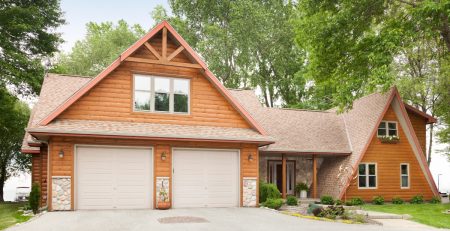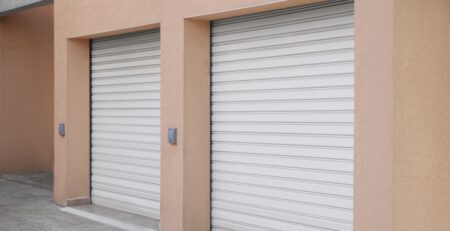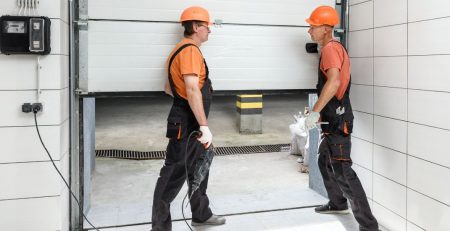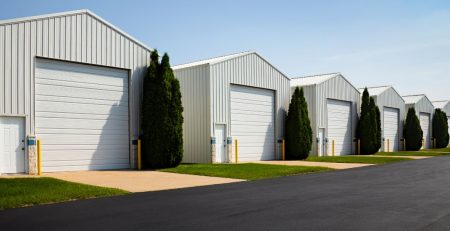How can I Install a Door Opener in my Garage?
Do you want to manually open and close your garage door whenever you need to go in or out? Installing a garage door opener can save time and effort, making your daily routine more convenient. This blog post will guide you through installing a door opener in your garage.
We will cover everything from understanding garage door openers and preparing for the installation to a step-by-step guide on installing different kinds of door openers. We will also highlight safety measures and WiFi-enabled features to be aware of while installing a garage door opener. Lastly, we will discuss when hiring a professional for the installation is best. Stay tuned!
Understanding Garage Door Openers
Garage door openers are crucial for convenient and effortless door operation. Various types of openers are available to suit individual needs. Understanding the horsepower of a garage door opener is essential for efficient performance. These openers use a motor that drives a trolley or chain, moving the door up and down.
Safety features like sensors and rolling code technology enhance the security of garage door openers. Consider HP, broken springs, torsion bars, fiberglass, and pulleys when selecting a garage door opener.
The Role of Horsepower in Garage Door Openers
When choosing a garage door opener, the horsepower plays a crucial role. The horsepower determines the lifting capacity of the opener, making it essential to consider the size and weight of your garage door. Heavier doors or those with added insulation require higher horsepower for efficient operation.
A higher horsepower garage door opener provides faster door operation, ensuring convenience. On the other hand, if you have a lighter door or a single-car garage, garage door openers with lower horsepower are suitable. Consider the horsepower carefully to ensure optimal performance.
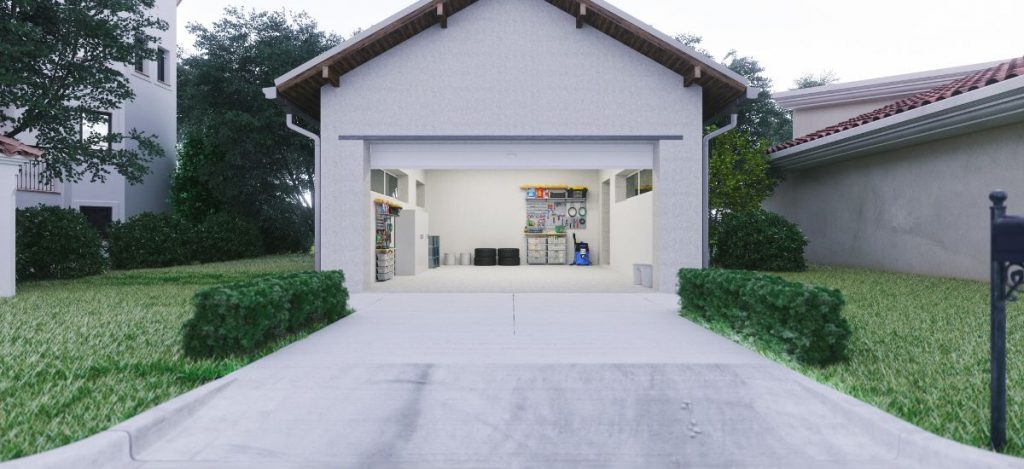
Types of Garage Door Openers and Their Features
Belt drive garage door openers offer smooth and quiet operation, making them popular for homeowners. On the other hand, chain drive garage door openers are known for their durability and affordability. Screw drive garage door openers, ideal for moderate climates, require less maintenance.
If you want to maximize ceiling space, consider jackshaft garage door openers mounted on the side of the garage. Lastly, direct-drive garage door openers have minimal noise and vibration as they only have a single moving part.
Preparing for Garage Door Opener Installation
Before installing a garage door opener, ensure the door is in good working condition. Safety features, such as adequately aligned and functioning photo-eye sensors, are essential. Check if your garage door requires an extension kit for taller doors. WiFi-enabled garage door openers provide the convenience of remote access and control.
Clear any obstructions in the garage to ensure a safe and efficient installation process. By following these steps, you can prepare effectively for installing a garage door opener.
Safety and WiFi-enabled Features to be Aware of
When it comes to installing a garage door opener, safety is of utmost importance. One key feature to be aware of is rolling code technology, which prevents unauthorized garage access. Additionally, battery backup systems ensure the garage door opener functions even during power outages, providing peace of mind.
Checking the Need for an Extension Kit for Doors
To determine if an extension kit is needed for taller garage doors, measure the door’s height. Extension kits are necessary for doors that exceed the standard size. These kits include additional hardware to accommodate the increased door height. To ensure a proper installation, consult the manufacturer’s instructions or seek guidance from a professional.

Step-by-Step Guide to Installing a Garage Door Opener
The first step is to assemble and mount the carriage tube. This essential component will serve as the main structure for the opener. Next, carefully hang the power unit from the ceiling, ensuring proper positioning and secure mounting. Once in place, attach the bracket that connects the carriage arm to ensure smooth door operation.
It’s essential to pay close attention to wiring the opener, making sure to connect the power supply and safety sensors correctly. Finally, complete the installation by testing the opener’s functionality and making necessary adjustments.
Assembling and Mounting the Carriage Tube
To assemble the carriage tube components, carefully follow the manufacturer’s instructions. Use the provided hardware to position the carriage tube to the header bracket securely. It is crucial to ensure that the carriage tube is level and parallel to the ground for optimal door operation. Attach the trolley to the carriage tube, ensuring it moves smoothly along the track. To reduce friction and noise, remember to lubricate both the carriage tube and the trolley.
Hanging the Power Unit from the Ceiling
To hang the power unit from the ceiling, start by locating the ceiling joists and marking their positions. This will ensure proper installation of the power unit. Next, attach the power unit to the ceiling using lag screws and support brackets. It’s essential to ensure the power unit is securely mounted and leveled to avoid any issues during operation.
Connect the power cord to a grounded outlet while following electrical safety guidelines. Finally, adjust the position of the power unit to provide adequate clearance for the garage door.
Attaching the Bracket That Connects the Carriage Arm
Position the bracket that connects the carriage arm on the top section of the garage door, aligning it with the carriage arm. Use the provided hardware to secure the bracket firmly. Next, connect the carriage arm to the bracket, ensuring smooth movement of the garage door. To ensure proper alignment, manually open and close the garage door to test the attachment. Make any necessary adjustments for optimal door operation. Remember to check for a broken spring, as well as the torsion bar, fiberglass, and pulley for any issues.
Plugging in the Safety Device
To ensure optimal functionality and added protection, it is essential to properly connect and plug in the safety device for your garage door opener. Start by connecting the safety sensors to the opener, ensuring that the wiring is done correctly. Once connected, safely plug in the safety device to activate the sensor.
It’s crucial to check the connection of the safety device to avoid any malfunctions. After installation, remember to test the safety device to guarantee reliable operation. By following these steps, you can enhance the safety and functionality of your garage door opener.
Different Kinds of Garage Door Openers and Their Installation
Chain-drive openers are a popular choice for their affordability and durability. Belt-drive openers are a great option if you value quiet operation and smooth performance. For heavy doors, consider screw-drive openers, which are low-maintenance. It is essential to match the horsepower of the opener to the weight of your garage door.
Also, properly installing the torsion spring is crucial for safe and efficient operation. By understanding the different kinds of garage door openers and their installation requirements, you can choose the one that suits your needs best.
Chain-Drive Opener Installation
To ensure stability:
- Securely attach the bracket to the ceiling joists.
- Connect the trolley to the opener for smooth opening and closing of the door.
- Install the chain properly, ensuring it is neither loose nor tight.
- Adjust the opener settings to control the door’s speed and force.
- Test the opener to ensure smooth operation and proper safety features.
- Consider HP, broken springs, torsion bars, fiberglass, and pulleys when installing a chain-drive opener.
Belt-Drive Opener Installation
To ensure optimal performance:
- Position the header bracket correctly.
- Smoothly install the belt drive, avoiding any twists or knots.
- Customize the door opening and closing by adjusting the opener settings.
- Test the opener to ensure smooth and quiet operation.
- For more oversized garage doors, consider using an extension kit.
Screw-Drive Opener Installation
To install a screw-drive opener in your garage:
- Determine the optimal positioning for efficient operation.
- Securely mount the screw drive to the garage ceiling to ensure stability.
- Adjust the opener settings to control the speed and force of the door, allowing for smooth and reliable operation.
- Regularly lubricate the opener’s moving parts, such as the hp, broken spring, torsion bar, fiberglass, and pulley, to maximize performance.
- Test the opener to ensure it functions properly.
Following these steps will result in a successful screw-drive opener installation.
When should you consider hiring a professional for garage door opener installation?
Hiring a professional for garage door opener installation is necessary in certain situations. These include needing more required tools, dealing with complex wiring, limited experience, heavy or oversized doors, and wanting proper and safe installation.
Installing a garage door opener can be challenging, especially if you need to become more familiar with the process. However, it is possible to do it yourself with the proper knowledge and guidance. By understanding the different types of garage door openers and their features, preparing for the installation, and following a step-by-step guide, you can successfully install a garage door opener in your garage.
However, it’s important to note that there are certain situations where it might be best to hire a professional for the job. Suppose you need more clarification about your abilities or encounter difficulties during installation. In that case, it’s always better to seek professional assistance to ensure the job is done correctly and safely.


